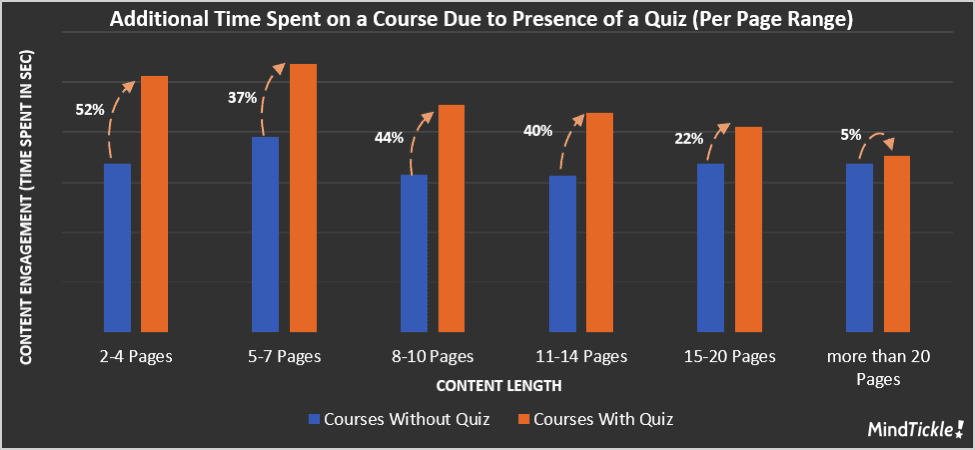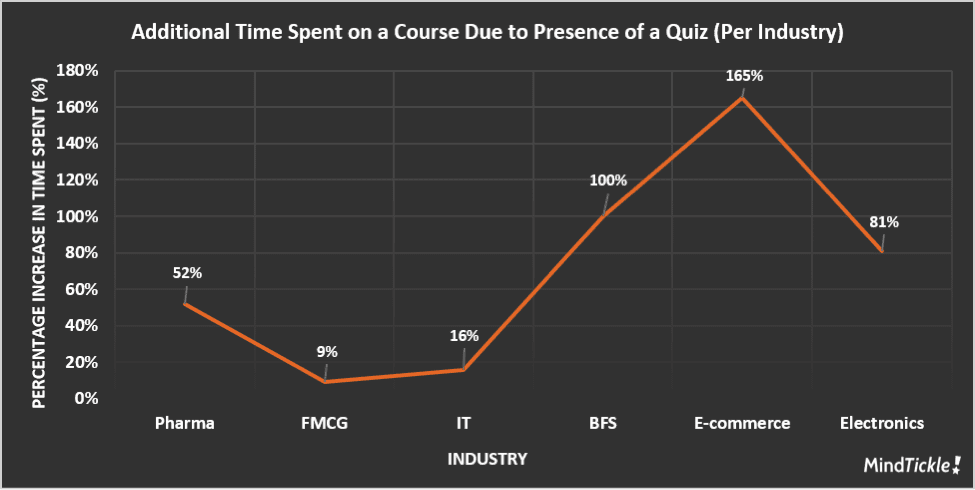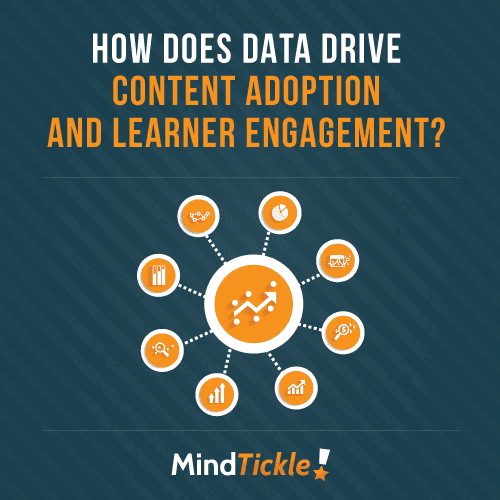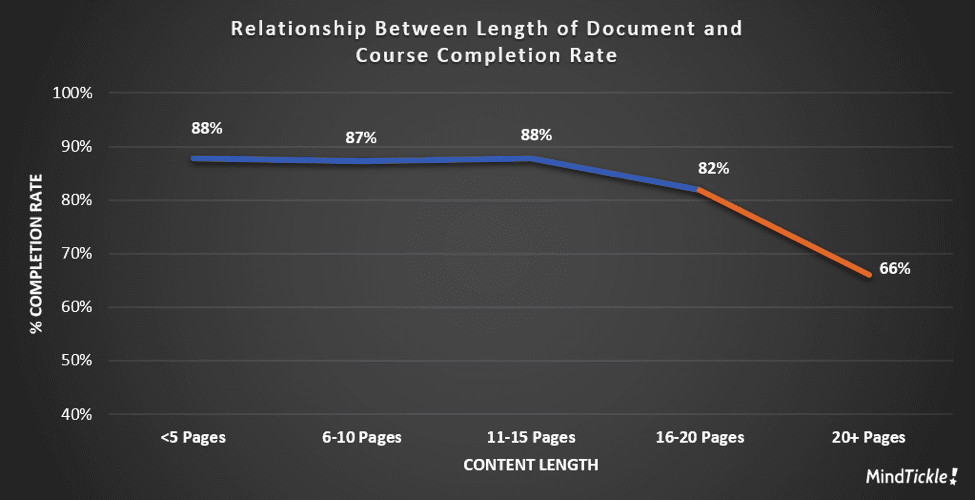up to 80%
of all content produced for sales teams is never used? By leveraging microlearning and knowledge retention techniques in your sales enablement programs you can drive content adoption and learner engagement and ensure your investment is not wasted.
What is microlearning?
Microlearning, or bite-sized learning, is where information is broken down into smaller chunks so that it’s easier for sales reps to consume and retain. The bite-sized content is also perfect for just-in-time training, which means it’s more likely to be consumed.
A programme of content, or
a “micro-curriculum,” can be drip-fed over days, weeks and months. Leveraging quizzes and knowledge checks, with techniques like repeated retrieval and spaced repetition, sales reps can retain more information long-term.
Who benefits from microlearning today and how?
Millennial salespeople make up a significant portion of the current sales population today. B
y
2025 it’s estimated that millennials will account for 75%
of the global population. That’s why it’s important to address the preferences of the millennial workforce when implementing sales enablement initiatives, and millennials have a preference for brief, bite-sized content.
But it’s not just millennial salespeople that benefit from microlearning. All sales reps can benefit from microlearning, particularly with busy schedules and distributed locations. But just because information is bite-sized doesn’t necessarily mean it’s engaging. You still need to ensure the content is engaging.
How do you develop engaging content?
There are two common challenges to overcome when creating engaging content:
How long should the content be?
This depends on several factors including:
- The demographics of your audience (like age and education level)
- The subject matter (is it about new product features, process changes or specific skill development)
- How important the content being shared is (is it ‘good-to-know’ or a business imperative)
- How frequently the content is updated (is this static or evergreen content, or dynamic information like competitive insights)
- How frequently will learners be exposed to this information (is it once-off baseline or onboarding knowledge, or part of ongoing training)
How can you drive learner engagement?
While many consider this question after sales training is completed, this question really should be addressed as the program is being designed. This will ensure the design can incorporate any features that will drive engagement, like knowledge checks.
How does Mindtickle solve these challenges?
Mindtickle is a sales readiness platform that helps high-growth customers like AppDynamics, Nutanix, MuleSoft and Cloudera solve these issues. Our experience gives us access to data (1)
from of over 200,000 sales representatives that span a broad range of demographic parameters – including age, education level, industry and type of sales team set-up (inside, field, BDRs etc.).
To find answers to these questions we conducted a deep-dive analysis to identify trends and best practices for content adoption across industries.
As a part of this analysis, we looked at several factors including the length and type of the content, time spent reading content, and whether the content included assessments. We also conducted additional analysis to find points of relevant correlation and to identify actionable results.
Now, let’s look at our findings for each of the challenges.
Challenge 1: How long should the content be?
Across all industries, salespeople are more likely to complete a module if the document is less than 5 pages long, but this drops drastically when the document contains 15 or more pages.
But the size of the document isn’t the only factor, it’s also important to consider how much information is on each page and how it’s presented. To ensure the information is easier to read:
- Use bullet points where possible to reduce text
- Summarize content in graphics where possible
- Use a complementary palette of colours that’s easy to read
- Don’t use images just to add aesthetic value
- Limit yourself to one concept per page
Of course, it is sometimes necessary to have longer documents due to the complexity and nature of the content or to achieve the desired learning outcome, but the document can still be made easier to read with these suggestions.
Challenge 2: How can you drive learner engagement?
The concept of ‘Test to Teach’ has been
well-accepted as a preferred alternative
to traditional testing in the context of school education. The same principles apply to adult learners.
In her article
‘
Facilitating Adult Learning: How to teach so people learn
’
, Dr Lela Vandenberg talks about ‘Application and Action’ as an important principle when designing a program for adult learning. She says, “adult learners are busy, practical, and learn by doing. They learn best when:
- There is an immediate application for the learning
- They participate actively in the learning process
- They can practice new skills or test new knowledge before leaving a learning session.”
Our data on sales reps confirm this. We found that sales reps spend more time on modules that included a quiz than those that didn’t. In fact, the presence of a short quiz improves engagement by 34% on average.


Though the overall findings are consistent across industries, the impact on each industry is different.


Including a quiz in the sales training module increased the time spent on a course considerably, particularly in the Pharma, BFS, E-commerce and Electronics industries.
Whether or not you should include intermittent quiz or knowledge checks will depend on the objectives of your sales enablement initiatives. And in case you were wondering, there is a difference between a quiz and a knowledge check. According to
The Training Doctor
:
- A quiz is used to test a learner’s ability to apply content. Their responses are scored based on predefined parameters, with results often recorded and compared to their peers.
- A knowledge check is used to review the content a learner has received to ensure learning took place. Learners are usually able to review the content until they feel confident enough to apply this knowledge.
In summary, optimize the engagement and adoption of your sales enablement initiatives by:
- Leveraging microlearning – keep content short and to the point, between one to five minutes
- Keeping content brief – below 15 pages but preferably less than five pages if possible
- Making it easier to read – use bullet points, short sentences and graphics
- Using quizzes and knowledge checks
While this analysis provides insights into how content can be made more engaging, it is always important to consider your own specific circumstances. Conducting a similar analysis with your own data will highlight any unique factors that may improve engagement and content adoption amongst your own sales reps.
By leveraging powerful data analytics you can empower your managers to make informed decisions and design more effective sales enablement initiatives. Data analytics will also help you prepare your sales reps for more effective customer conversations and equip them to become true champions for your organization.
Footnotes:
1
Data Source: Usage Data of 200k+ Sales Reps on Mindtickle from January – April 2017.









